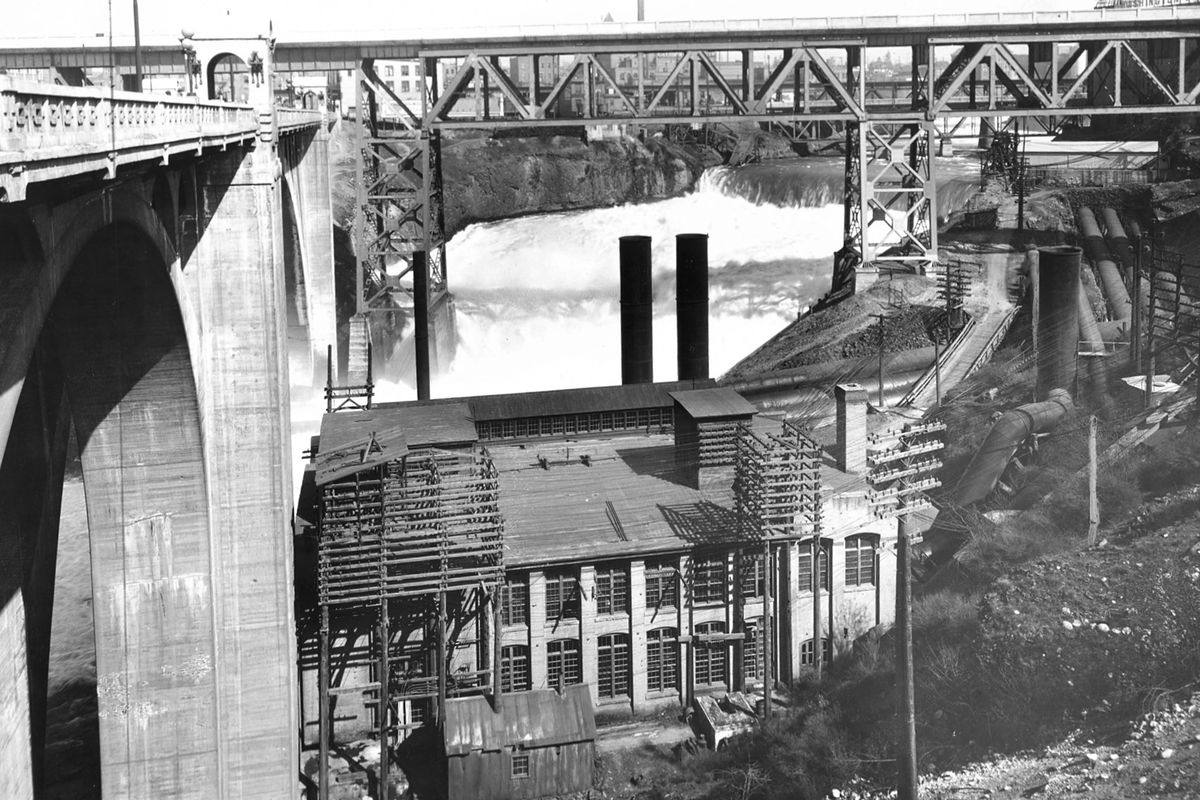Then and Now: Monroe Street Dam powerhouse

Only a few months before the Great Fire of 1889, Washington Water Power, now called Avista, was formed by a group of Spokane businessmen to make electricity from the Spokane River. The Edison Electric Illuminating Co. had formed a few years earlier.
Even with both companies in operation, demand exceeded supply. Initially, all the power went to streetlights and a few businesses. After the fire, WWP began building the Monroe Street project, creating a spillway and an intake for a generator at the foot of the Monroe Street Bridge.
Instead of a water wheel submerged in a roaring flume, the Lower Falls Generating Plant would have a penstock, an enclosed waterway leading to a generating turbine. The powerhouse sat on the south bank next to the bridge’s foundation. River water entered beneath the substation on Post Street and gravity built the pressure as the water sped toward the turbine below.
During those early years, the small power company merged with the Edison Electric Illuminating Co., ran streetcar lines, operated Natatorium Park, built a high-voltage line to power mining operations in Idaho’s Silver Valley, sold electric appliances and built more dams.
The century-old Lower Falls building was removed in 1990 and the new generators moved underground. The machinery now sits below an octagonal steel cover in the plaza of Huntington Park. The original 1890 generator, after a century of service, was sent to the Henry Ford Museum in Dearborn, Michigan.
In 2014, Avista renovated Huntington Park and created a new plaza between the Post Street substation and Spokane City Hall as part of the company’s 125th anniversary. The Monroe Street project can produce up to 15 megawatts, depending on demand and river flows. It represents about 2 percent of Avista’s generating capacity. Most of that power is used in the downtown core.
– Jesse Tinsley